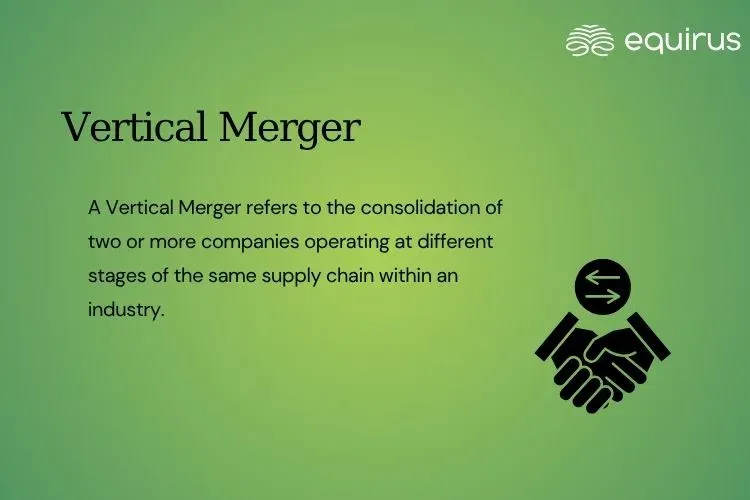Vertical Merger

Key Highlights
-
A Vertical Merger refers to the consolidation of two or more companies operating at different stages of the same supply chain within an industry.
-
Types of vertical merger includes forward and backward integration.
What is Vertical Merger?
A Vertical Merger refers to the consolidation of two or more companies operating at different stages of the same supply chain within an industry. Unlike a horizontal merger, which combines competitors, a vertical merger unites a company with its supplier or distributor to enhance operational efficiency, control costs, and strengthen market positioning.
In a vertical merger, one entity operates upstream (for example, as a producer or supplier of raw materials), while the other operates downstream (as a manufacturer, distributor, or retailer). The primary objective is to streamline production and distribution, reduce dependency on third parties, and achieve better integration across the value chain.
For instance, a car manufacturer acquiring a component supplier would be a typical example of a vertical merger.
Types of Vertical Merger
-
Forward Integration: This occurs when a company merges with or acquires another business closer to the final customer in the supply chain - for example, a manufacturer acquiring a distribution or retail entity. Forward integration helps improve market access and customer reach while reducing reliance on external distributors.
-
Backward Integration: In a backward integration, a company merges with or acquires a supplier or raw material producer. This move helps secure the supply of key inputs, stabilize production costs, and improve quality control. For instance, a consumer goods firm acquiring a packaging supplier exemplifies backward integration.
Strategic Rationale
-
Operational Efficiency: Eliminates redundant processes and ensures smoother supply chain coordination.
-
Cost Optimization: Reduces procurement, logistics, and transaction costs.
-
Market Stability: Secures consistent access to key inputs or distribution channels.
-
Improved Margins: Enhances profitability through better control over production and pricing.
Benefits of Vertical Merger
-
Synergy Creation: Vertical integration can create long-term value through cost savings and margin expansion.
-
Risk Reduction: Minimizes exposure to supply chain disruptions and market fluctuations.
-
Competitive Advantage: Enhances the company’s ability to deliver products efficiently and competitively.
Risks and Considerations
While vertical mergers offer clear strategic benefits, they also pose challenges such as:
-
Integration Complexity: Managing different business processes and systems can be operationally demanding.
-
Regulatory Scrutiny: Antitrust authorities may review mergers that significantly alter supply chain dynamics or reduce market competition.
-
Capital Intensity: Upfront investment requirements can be high, potentially affecting liquidity.
